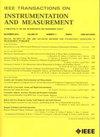DMPDD-Net:一种有效的铝型材表面缺陷检测方法
IF 5.6
2区 工程技术
Q1 ENGINEERING, ELECTRICAL & ELECTRONIC
IEEE Transactions on Instrumentation and Measurement
Pub Date : 2024-11-13
DOI:10.1109/TIM.2024.3497168
引用次数: 0
摘要
缺陷检测是工业产品生产过程的重要组成部分。铝型材加工需要更加精确和稳健的缺陷检测方法。然而,各种类型的缺陷、小尺寸的缺陷像素区域和高缺陷-背景相似性问题给现有的铝型材表面缺陷(APSD)工业缺陷检测方法带来了挑战。针对这些问题,本文提出了一种新型缺陷检测网络,命名为 DMPDD-Net,该网络采用双路径并行注意机制(DP-AM)、多特征融合机制(MFFM)和并行空间金字塔池化快速(PSPPF)模块。具体来说,该检测网络通过设计并行 DP-AM 模块,增强了对小尺寸缺陷的特征提取能力。同时,在特征融合公式中设置了自学习因子,构建了 MFFM 模块,通过多通道特征融合机制增强了 APSD 的缺陷特征表达能力。此外,我们还提出了 PSPPF 模块,在 "只看一次-版本八 "模型(YOLOv8)中执行空间金字塔池化(SPP),以减少关键特征的丢失。我们通过在天池铝型材表面缺陷数据集(TAPSDD)上进行烧蚀实验和算法比较,验证了我们提出的 DMPDD-Net 的有效性和改进性。在 TAPSDD 数据集上,我们提出的模型优于基线网络,平均精度 (mAP)@0.5 提高了 3.5%,mAP@0.5:0.95 提高了 2.8%,公式一分数 (F1) 提高了 3.2%。我们的研究结果表明,我们提出的网络是目前 APSD 缺陷检测方法的一个有前途的替代方案。本文章由计算机程序翻译,如有差异,请以英文原文为准。
DMPDD-Net: An Effective Defect Detection Method for Aluminum Profiles Surface Defect
Defect detection is an important part of the manufacturing process of industrial products. The processing of aluminum profiles requires more accurate and robust defect detection methods. However, various types of defects, small size of the defect pixel area and high defect-background similarity issues pose challenges to existing industrial defect detection methods for aluminum profiles surface defect (APSD). To address these issues, with dual-path parallel attention mechanism (DP-AM), multifeature fusion mechanism (MFFM) and parallel spatial pyramid pooling fast (PSPPF) module, a novel defect detection network, named DMPDD-Net, is proposed in this article. Specifically, the proposed detection network enhances the feature extraction ability of small-size defects by designing a parallel DP-AM module. Meanwhile, a self-learning factor is set up in the feature fusion formula to construct the MFFM module, which enhances the expression ability of defect features for APSD through multichannel feature fuse mechanism. Additionally, the PSPPF module is proposed to perform spatial pyramid pooling (SPP) in You-Only-Look-Once-Version-Eight model (YOLOv8) to reduce the loss of key features. We validate the effectiveness and improvement of our proposed DMPDD-Net by conducting ablation experiments and algorithm comparisons on the Tianchi aluminum profile surface defect dataset (TAPSDD). Our proposed model outperforms the baseline network with a 3.5% increase in mean average precision (mAP)@0.5 and a 2.8% increase in mAP@0.5:0.95, and a 3.2% increase in formula-one-score (F1) for the TAPSDD dataset. Our research results indicate that our proposed network is a promising alternative to the current defect detection methods for APSD.
求助全文
通过发布文献求助,成功后即可免费获取论文全文。
去求助
来源期刊

IEEE Transactions on Instrumentation and Measurement
工程技术-工程:电子与电气
CiteScore
9.00
自引率
23.20%
发文量
1294
审稿时长
3.9 months
期刊介绍:
Papers are sought that address innovative solutions to the development and use of electrical and electronic instruments and equipment to measure, monitor and/or record physical phenomena for the purpose of advancing measurement science, methods, functionality and applications. The scope of these papers may encompass: (1) theory, methodology, and practice of measurement; (2) design, development and evaluation of instrumentation and measurement systems and components used in generating, acquiring, conditioning and processing signals; (3) analysis, representation, display, and preservation of the information obtained from a set of measurements; and (4) scientific and technical support to establishment and maintenance of technical standards in the field of Instrumentation and Measurement.
 求助内容:
求助内容: 应助结果提醒方式:
应助结果提醒方式:


